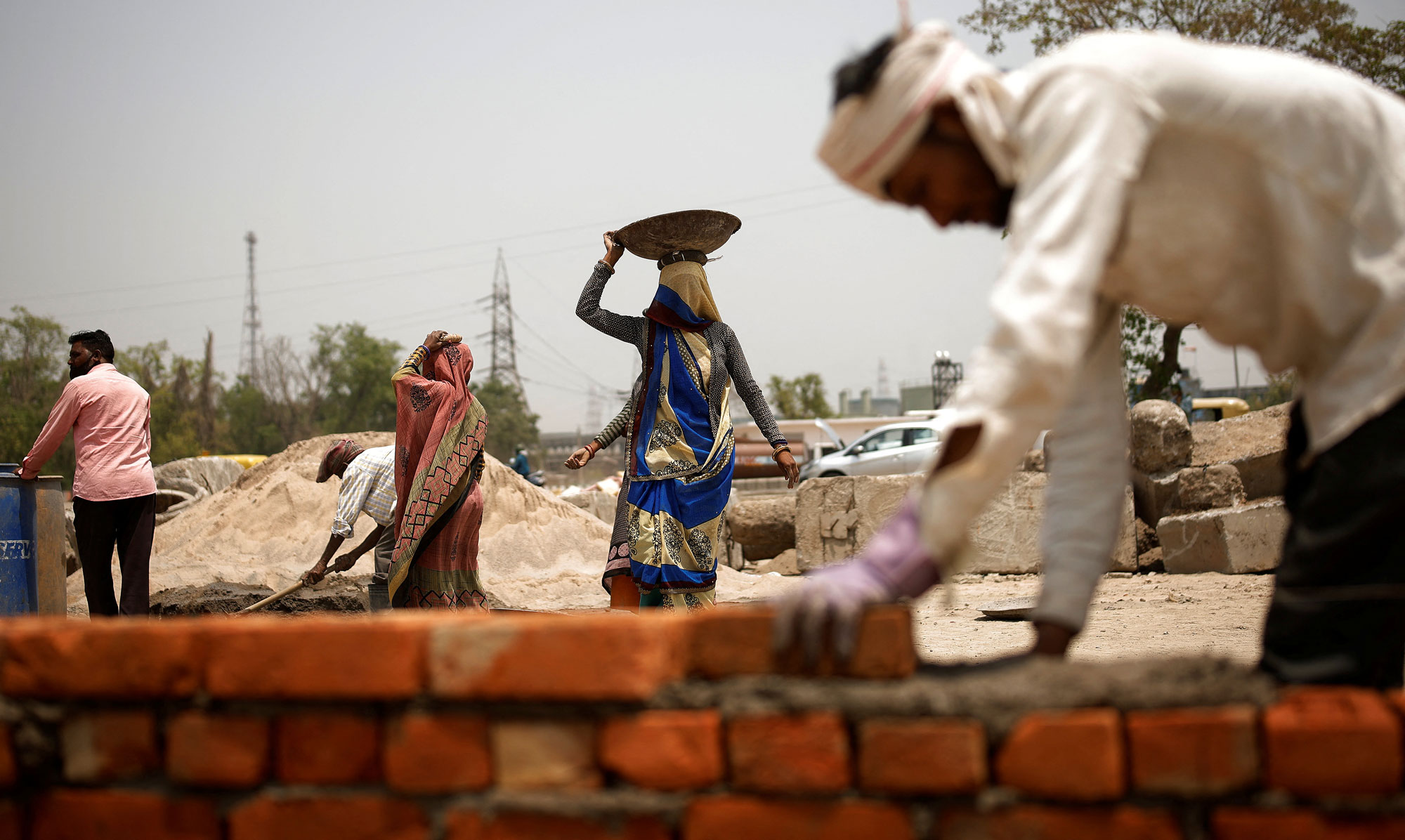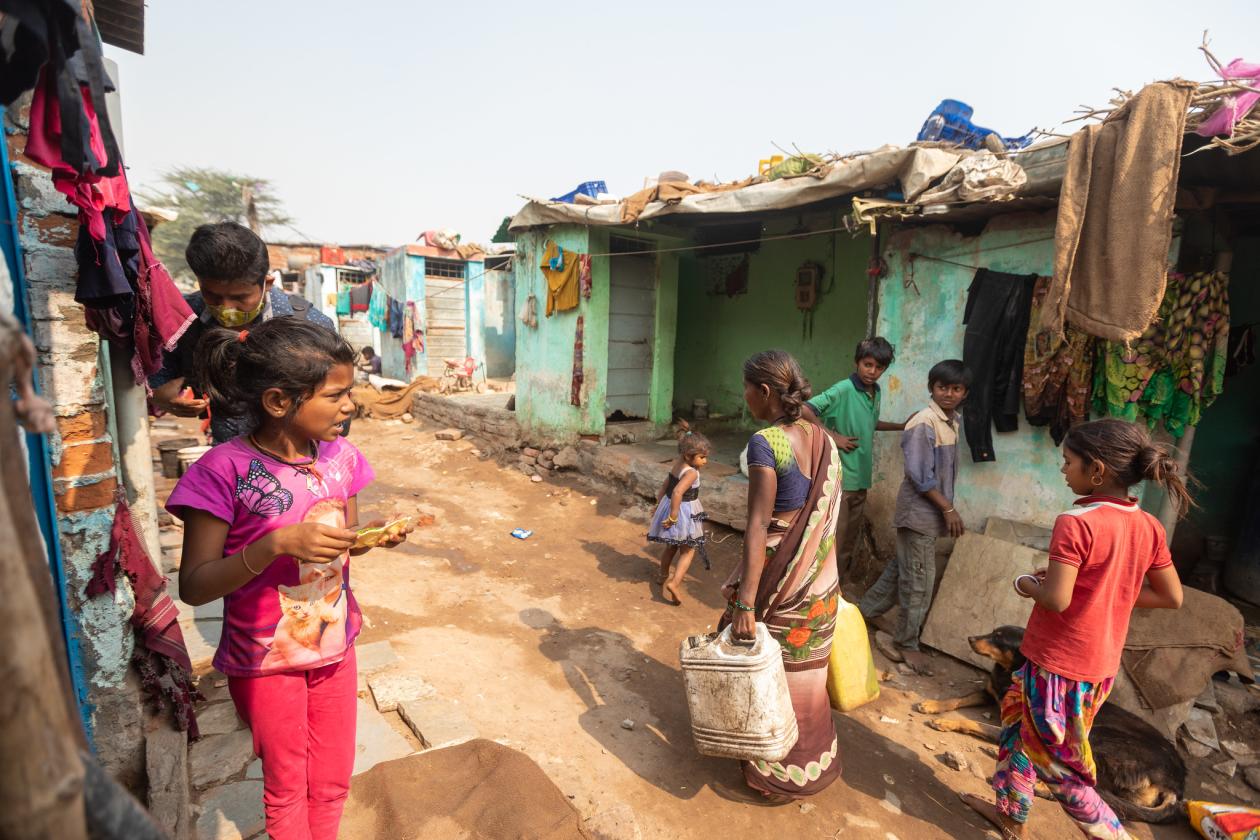
The past year registered record-shattering global temperatures. People around the world are already witnessing epic heat waves, wildfires and drought at 1.1 degrees C (2 degrees F) of global warming, compared to pre-industrial averages. With current policies putting the world on a trajectory for 2.5 degrees C to 2.9 degrees C (up to 5 degrees F) of warming by 2100, this year’s sweltering heat is just a glimpse of the future ahead.
In a warming world, cities face an even greater burden of higher temperatures than rural areas. For one, they hold most of the world’s population. Their exposure to high temperatures is amplified by the urban heat island effect, where buildings, concrete and other infrastructure trap heat. Density, air pollution, poverty and geography further increase the vulnerability of many people in cities.
So what exactly will warmer global temperatures mean for city residents’ exposure to excessive heat? We need better data to say with precision, but global-scale models from the Intergovernmental Panel on Climate Change (IPCC) start to paint a picture.
Big Differences in Urban Heat Effects from 1.5 Degrees C vs. 3 Degrees C of Warming
According to the IPCC, life-threatening heat and humidity are expected to impact between half to three-fourths of the global population by 2100. Cities, which currently hold more than half the world’s population and will add another 2.5 billion people by 2050, will be exposed to double the level of heat stress compared to rural surroundings.
By layering city locations on top of IPCC models to provide more tailored data, we begin to get a clearer picture of why limiting global temperature rise to 1.5 degrees C (2.7 degrees F), the target set in the international Paris Agreement on climate change, is so important.
We looked at one indicator related to extreme heat: annual days where maximum temperatures exceed 35 degrees C (95 degrees F). This level of heat is associated with severe health impacts and stress to economies and infrastructure. The IPCC says extreme heat in urban areas will increase levels of mortality and heat-related illnesses, especially among the elderly and young children; impair concentration and cognition, affecting learning and educational outcomes for children, particularly in South Asia and Africa; and reduce labor capacity during hot periods by 20% or more by 2050, up from 10% currently. In the United States alone, extreme heat already costs the economy $100 billion annually and is projected to increase to $500 billion by 2050.
These kinds of risks increase with every increment of warming, however small. The number of urban residents exposed to at least 8 days a year of temperatures exceeding 35 degrees C increases from 66% under 1.5 degrees C (2.7 degrees F) of warming to 85% under 3 degrees C (5.4 degrees F) of warming.
Many cities will become places where extreme temperatures persist for nearly half the year. At 1.5 degrees C of warming, only 67 cities will experience 150 or more days a year of temperatures exceeding 35 degrees C. Under 3 degrees C of warming, it rises to 197 cities. More than half of those cities (103) are located in India. And the increases in temperatures are likely to be even greater in many cities, because this modeling does not consider the urban heat island effect.
Excessive Heat Will Hit Resource-strapped Cities and the Urban Poor the Hardest
Cities with the least resources to adapt will be among the hardest hit by higher levels of warming.
While cities on average will experience 29 more extremely hot days under 3 degrees C of warming vs. 1.5 degrees C, the difference is greater for cities in less developed and lower-income regions. In South Asia, it’s 40 days; Sub-Saharan Africa, 38 days; Latin America and Caribbean, 34 days. For cities in lower-middle-income countries, 38 days; low-income countries, 34 days. These are often cities that are also growing rapidly and lack the fiscal and institutional capacity to adapt.
Within cities, IPCC research shows that economically and socially marginalized groups will be most affected. It’s the urban poor — including a billion or so people living in slums and informal settlements — who often live in more densely populated and hotter parts of cities, frequently in areas suffering from poor air quality, or in buildings with metal roofs and without insulation or cooling systems. For example, a WRI India analysis found temperatures in one of Mumbai’s slums averaged 6 degrees C (11 degrees F) warmer than neighboring areas.
The urban poor are also more likely to work in occupations requiring outdoor and physical labor, and they often aren’t provided labor and social protections. One in three urban dwellers lacks access to at least one core service, like adequate housing, clean drinking water, sanitation or reliable electricity. And this “urban services divide” is widening. If business continues as usual, slums are expected to continue growing across the developing world.
Adaptation Could Be Difficult Even in Prepared Cities
Modeling urban futures is not just a hypothetical exercise; cities are already experiencing significant changes. Ahmedabad, India has always been a hot city. But in 2013, unbearable conditions prompted the city to launch South Asia’s first citywide Heat Action Plan.
The plan focuses on raising public awareness, implementing an early warning system, building health care capacity, reducing exposure and promoting adaptive measures, such as women-led, community-based adaptation. The city is working to increase tree cover due to a lack of green space. Local authorities and civil society groups collected data showing that these measures help avoid 1,100 or more heat-related deaths annually.
Our analysis shows extreme heat in Ahmedabad will get much worse. Recently averaging 164 days annually over 35 degrees C, under 3 degrees C of warming, this could increase to 225 days annually. That’s similar to what’s currently seen in near-Saharan cities like Maiduguri, Nigeria.
A host of challenges hold the city back from making further progress, despite its forerunner status. Policymakers haven’t fully integrated heat considerations into the city’s overall development policies, such as land use planning. The plan’s implementation has been relegated to mostly emergency response, and the city struggles to reach its most vulnerable populations. Raising political will and increasing finance to scale solutions more quickly are also challenges.

Bridging the Local Climate Data Gap
What could help Ahmedabad and other cities like it is more easily accessible and useful data on the impacts their specific city will face. Information on extreme temperature changes and other climate hazards is currently difficult to access or not available at all at the city level.
WRI, Bloomberg Philanthropies and other partners are building data solutions to meet these needs. More precise and actionable city climate data could inform local decision-making by providing information on extreme-weather events and their frequencies, as well as insights on which sectors will be most impacted.
Better models can help direct more resources for city-level climate action, such as through the Cities Climate Finance Leadership Alliance. Actionable information can strengthen civil society engagement and vulnerable communities’ awareness, agency and participation in climate action. Better data can also help improve collaboration between local and national authorities, as the implications of exposures – and potential policy pathways – would be clearer. More precise climate models can and should be used to set, revise and achieve goals for urban planning and climate finance.
Making Cities Livable Requires Holding Warming to 1.5 Degrees C
As even global-scale modeling of city climate hazard exposures shows — not to mention the lived experience of millions of people during the hottest year on record — the world must recommit to maintaining the 1.5 degrees C goal to keep cities livable. Increasing the ambition of both national and local mitigation commitments and investments is a must. These plans must go hand-in-hand with adaptation, so cities can deal with the climate risks communities are already facing.
But we shouldn’t underestimate the scale of the challenge. Cities are humanity’s most complex systems. We need to plan, build and live in them differently to prepare for the impacts of climate change and help turn cities into climate solutions. This kind of transformational change can’t happen without multi-level interventions and more actionable local information — to justify trillions in investments, make informed policy choices, and protect and empower those most at risk.
This article’s interactive visualizations were designed by Sara Staedicke.
This work is supported in part by Bloomberg Philanthropies.
Methods Footnote: Annual days with maximum temperature above 35C is measured using Bias Adjusted TX35 from CMIP6, accessed from IPCC WGI Interactive Atlas, calculated using bilinear interpolation for each city over 500,000 population in 2015 from the GHS Urban Centre Database. City populations are also from GHS-UCD. Region and country income categories are from the World Bank.
This article originally appeared on WRI’s Insights.
Eric Mackres is Senior Manager, Data and Tools, WRI Ross Center for Sustainable Cities.
Ted Wong is Research and Project Associate, Data & Tools, WRI Ross Center for Sustainable Cities.
Schuyler Null is Senior Communications Manager, WRI Ross Center for Sustainable Cities.
Rocío Campos is Communications Manager, Center for Equitable Development at WRI.






